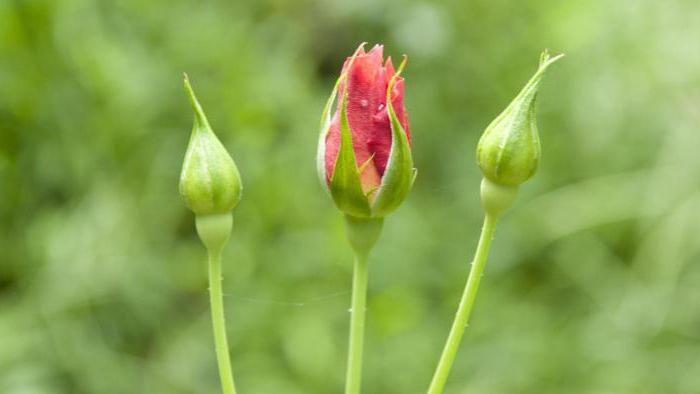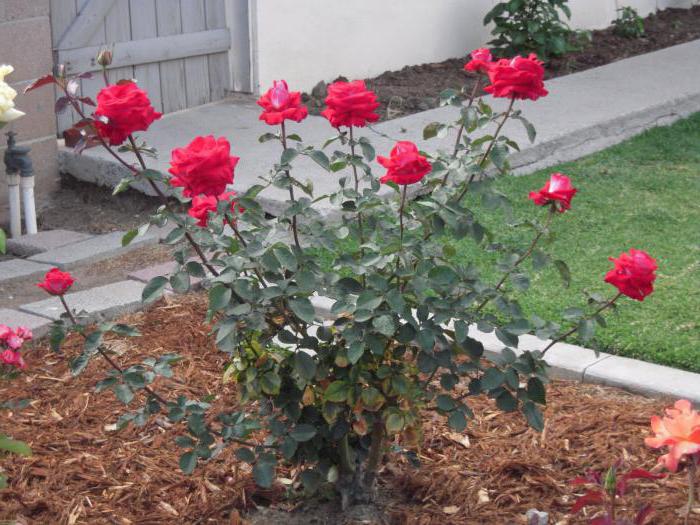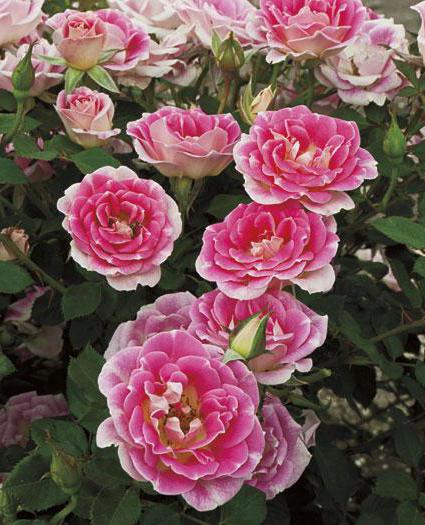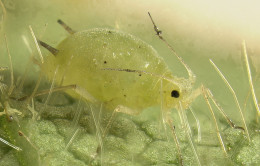
Why do young rose buds fall off. In what cases and why do hibiscus buds fall
There can be a lot: from improper maintenance of a plant to damage by pests. In each case, you need to look for the cause individually, paying attention to other signs.
Improper maintenance and poor nutrition
The rose is a heat-loving plant, therefore, for a comfortable maintenance, it is necessary to provide it with a constant air temperature in the range of 18-22 ° C, without sudden changes and drafts. In too warm and dry air, the plant sheds leaves. The same happens if the scorching rays of the bright summer sun fall on the rose. Lighting needs good, but not direct sunlight.
Rose leaves can fall off and turn yellow even with improper watering. Do not use chlorinated or too cold water. It is best to water with filtered or settled, and preferably rainwater. Also, the rose does not tolerate drying out and waterlogging of an earthy coma. The soil in the pot should be moderately moist, but stagnant water should be avoided. It is necessary that the pot in which the rose grows has drainage holes. It is best to put it in a container with wet drainage - in this case, the moisture will gradually rise to the roots without causing them to become waterlogged.
Abundant rose bloom in the absence proper feeding can also cause yellowing and leaf fall. The plant spends a lot of energy on flowering, so it needs good nutrition. To do this, you need to systematically fertilize the rose 1-2 times a month with a complex phosphorus-potassium fertilizer for indoor flowers and spray it with a warm solution of the Epin preparation to maintain immunity.
Pests and diseases of room roses
In other cases, the cause of this phenomenon may be pests: aphids, spider mites, for which the conditions for growing indoor flowers are ideal. To get rid of them, you need to wash the rose leaves in a solution of laundry soap or use special insecticides.
Sometimes the reason for the poor condition of the flower may be earthworms that damage the roots of the plant. In this case, the pot with a rose should be placed in a container with hot water (55-60 ° C) and kept for 50-60 minutes. Worms will come to the surface where they can be collected.
Chlorosis is a plant disease that causes an increased alkaline reaction of the soil. It also leads to the appearance of spots on the leaves and their fall. For treatment, special fertilizers are used that improve the composition of the soil. In this case, it is best to transplant the rose into another soil with a neutral or slightly acidic reaction.
Periodically indoor rose needs rejuvenation, even if outwardly she looks normal. To do this, in the spring, cut the branches to 1/3 of their length. This will increase branching and encourage the development of new buds.
If you want to grow a rose in your flower bed, then be prepared to face a number of troubles and problems. The queen of flowers is considered the most capricious plant, and if not implemented proper care, then you will not be able to enjoy its aroma and beauty. The most common question asked by novice rose growers is why they don't bloom. We will try to answer you.
The reasons
The answer to this question is simple. There are a number of reasons that affect the lack of buds. Consider them all in order and in more detail:
- Too little time has passed since the transplant of the rose bush. The plant must undergo adaptation, so wait for the buds only next season.
- Bad soil. The soil may be deficient in nutrients and minerals. The earth should be constantly loosened to a depth of 70 cm.
- Bad place. The rose loves light and sunny areas where there will be no draft. The bush develops slowly.
- Insufficient soil moisture. Although the flower is also considered drought resistant, do not forget that in this case it will simply survive, and not try to bloom.
- Incorrect pruning of a rose bush will never lead to beautiful buds.
- If you have not prepared the bush for winter, then there is a chance that it will freeze. The next year, the rose may only release green leaves, and the buds will not appear.
- Due to various diseases and pests, the flowers will also not tie.
We looked at the most common reasons why roses grow poorly. Why do not bloom, we know. Now we need to learn how to deal with it somehow.
Work on mistakes
Most often there are grafted specimens of roses, so some features should be taken into account when planting them. So, before answering the question of why roses do not bloom for the second year, you need to know the following:
- The grafted bush must be properly planted. The grafting site should be approximately 5 cm below the soil level.
- If you leave the grafting site at the top, then the buds will begin to form on the rootstock, that is, on the wild rose. This will cause the plant to weaken and it will not bloom.
- If the graft is planted very deeply, then this place will rot from constant moisture. The bush will die.
So we found out, grafted. Today, there are a huge number of different varieties that differ in some features in cultivation.

Rose "Floribunda"
We have analyzed the most common reasons that apply to all varieties. Now you need to study the specific question - why the Floribunda rose does not bloom. This is a variety of plants that should delight you with their buds constantly throughout the summer. If this does not happen, then the bush does not receive appropriate care. Namely:
- This variety is easily affected by fungal diseases, which inhibit growth and development.
- Bad soil. Rosa "Floribunda" loves loam. Neutral soil is allowed, the acidity of which is about 6-7 pH.
- The plant could freeze. To do this, the bush must be prepared for frost in the fall. You can spud the plant or cover it with sawdust and special covering material.
In all other respects, this rose is considered unpretentious. It is suitable for growing beginner gardeners and professionals in their field. For abundant flowering in early spring, add manure and peat to the soil. The rose bush will receive additional nutrition.
Advice for beginner gardeners! Keep the bed where the Floribunda grows clean. The soil must be constantly cultivated from weeds, which take all the moisture.

spray rose
There is another popular plant variety. It includes a shrub rose. This flower is grown at home and in the garden. It is worth telling why the spray rose does not bloom and how this can be fixed. To begin with, it is worth talking about the fact that you cannot cut flowers for bouquets from these bushes. The main cause of the problem of the absence of colors is considered incorrect processing. To do this, you need to know some of the nuances:
- Pruning should be done in early spring when the buds swell.
- At the base, you need to leave the most powerful branches, on which strong peduncles can form in the future.
- If the ends of the rose are very frozen, then they must be removed immediately.
- On bush varieties in the summer, branches may dry out. They are also cut off.
- As soon as the buds have faded, they must be cut off immediately so that all the strength of the rose does not go to them.

If you have carried out the correct care for a spray rose, then it can delight with its beauty and aroma for a long time. If a plant first buds in the spring, there is a small chance that it will bloom again in the summer.
Finally
If you want to surprise others with the beauty of your flower beds, then choose roses for this. Why don't they bloom, you know. It remains to provide them with the necessary care, and then they will thank you with aroma and their beauty.
Add site to bookmarks
In what cases and why do hibiscus buds fall off?
- Aphids or root rot
- Poor indoor conditions
- Wrong temperature
- Irrigation and lighting errors
- Feeding and stress
Why do hibiscus buds drop? This question is of interest to many flower growers. This flower has long been a universal favorite. And if you properly care for the plant, then you can practically all year round enjoy beautiful large flowers.
Hibiscus buds can fall off for various household and viral reasons.
But very often the buds begin to wither and fall off, never starting to open. There may be several reasons for this phenomenon. And every owner who loves his plant must know them in order to successfully deal with this problem. There are both household factors and viral ones.
Aphids or root rot
To begin with, let's consider what kind of pests can provoke the fall of buds in indoor hibiscus. Most often, when a plant is affected by white aphids, the buds begin to turn yellow at first, and then wither and fall off. At the same time, small white larvae can be seen on the plant, which slowly move along the leaves and stems.
Usually dropping buds in this case is a kind of reaction to such pests. In order to return the hibiscus to normal life, you must first destroy the aphids. To do this, it is recommended to treat the plant with a special insecticide against aphids, and then wash the flower under a warm shower and let it dry.

Often the fall of buds in hibiscus is associated with the defeat of aphids.
As soon as this is done, all shoots with sluggish buds should be cut off sparingly with a sharp knife. In this way, you can not only cure aphids from hibiscus, but also make the plant bloom better, as pruning helps to form new beautiful buds.
In the event that, in addition to dropping buds, the plant also has yellowing of the leaves, but no pests are visible on the ground part of the hibiscus, this may indicate the presence of root rot. Most often, such putrefactive bacteria start up in the root system of roses that are watered too often with cold water.
To be sure of this, you need to get the plant out of the pot and inspect the roots: if there are damaged parts, cut them off, treat the cuts with charcoal. The plant is recommended to be transplanted into a new soil, and before that, wash the old pot with hot water and laundry soap, and then hold it in a weak solution of manganese.
After that, you need to try to water the plant less often, but make sure that the substrate remains moist all the time. The stems after the fallen buds need to be cut a little so that new numerous and strong flower shoots begin to develop.
Back to index
Poor indoor conditions
But most often, the buds of indoor hibiscus fall off for domestic reasons. And this is due to improper care for such plants. If at least one bud has fallen for no apparent reason, this already indicates that some (even one) condition for good growth and development of hibiscus is not met.
Back to index
Wrong temperature

When the air temperature in the room is not suitable, hibiscus can also drop buds.
In the event that the air temperature does not suit the plant, it begins to actively drop buds. The optimum temperature is considered to be about 23 ° C in summer and about 18 ° C in winter. If the room is colder than the minimum allowed, the plant may drop the bud before it even begins to open.
If the ambient temperature is too high, and the humidity, on the contrary, is low, the buds may begin to dry out and, as a result, fall off on their own. Accompanying this is also the yellowing of the edges of the leaves of indoor hibiscus.
To eliminate this phenomenon, you need to provide the plant with the correct air temperature. At the same time, it is very important that both in summer and in winter the plant is not in a draft. This is especially true during the flowering and growing season, when hibiscus is actively developing.
WHY DO BUDS FALL AT ROOM PLANTS? WE ANSWER! Very often we ask the question: “Why do buds or flowers fall”? Falling buds or flowers can be caused by dry air, poor lighting, excess nitrogen, or moving the plant from one place to another. Most often it can be a consequence of a lack of light and moisture, as well as exposure to cold air. Majority indoor plants resistant to cold, but not to frost. A sudden drop in temperature in a warm room or dry cold causes many problems. Consider the reasons for the fall of buds and flowers according to the most famous and common indoor flowers:
Azalea - during the period of flowering and budding, the plant cannot be moved from place to place, rotated (even the slightest change in the refraction of rays can lead to falling buds). Drafts and very high air temperatures in the summer also affect the fall of the buds. Adenium - buds can drop due to the presence of pests on it, turning the plant during flowering relative to light, irregular watering. With a lack of lighting, it can drop flowers without opening them. Ahimenes - with the appearance of the first buds, you need to apply mineral fertilizer once every 2 weeks. And you also need an annual spring transplant into nutrient soil.
Balsam - by dropping buds, it reacts, most likely, to a short-term overdrying of the substrate. This can also be from a lack of nutrition, from temperature changes, from too many buds - the plant cannot feed everything and sheds some of them - this is called self-regulation, and from many other reasons. If the buds do not bloom, there may be several reasons: lack of light, lack of nutrition, excess nutrition, too low temperature, drying out of the soil, dry air or transplant. Begonia - falling buds can be caused by water getting on them, dry air or insufficient watering. Gardenia - during the formation of buds and flowers, the plant does not tolerate temperature fluctuations. Irregular watering causes dropping of buds. Sometimes there is a massive fall of the buds, which depends on the dryness of the air, the drying of the soil clod in the pot, and the temperature drop is less than 16 degrees. Buds may not open during long periods of cloudy weather. During the period of budding and flowering, it is undesirable to turn the plant.
hibiscus ( Chinese rose) - during budding and flowering, the hibiscus is not rearranged, moved or rotated, as this will cause the buds or flowers to fall off. Gloxinia (synningia) - there can be several reasons for the fall of buds. When the tuber is healthy, good large leaves, the buds fall off from lack of nutrition for them. Give a complex mineral supplement containing trace elements (“Flower”, Sudarushka or others). Spray around the air with water, but not flowers and leaves. Do not allow the earthen clod to dry out and drafts. Hybrid Gloxinia are more demanding on the temperature regime (it should not be below 17 ° C). Zygocactus (Decembrist, Schlumbergera) - the plant sheds buds or parts of segments on the leaves at too low a temperature, insufficient watering, rearranging to a new location, excess fertilizer, pests or diseases, and it is also necessary to check the roots.
Camellia - at high temperatures there is a risk of falling buds. And also, when plants in the budding phase are moved to another place (a change in the light regime affects). Medinilla - With a lack of light, the medinilla may not bloom or shed flowers. During flowering or budding, you can not turn or rearrange the pot. Orchid - sometimes sheds buds. There can be many reasons for this behavior. Check: have you flooded or dried out the roots? Are you getting too carried away with fertilizers? Did the room smoke? Was there a sharp change in temperature, cold air from somewhere? Is it hot in the room?